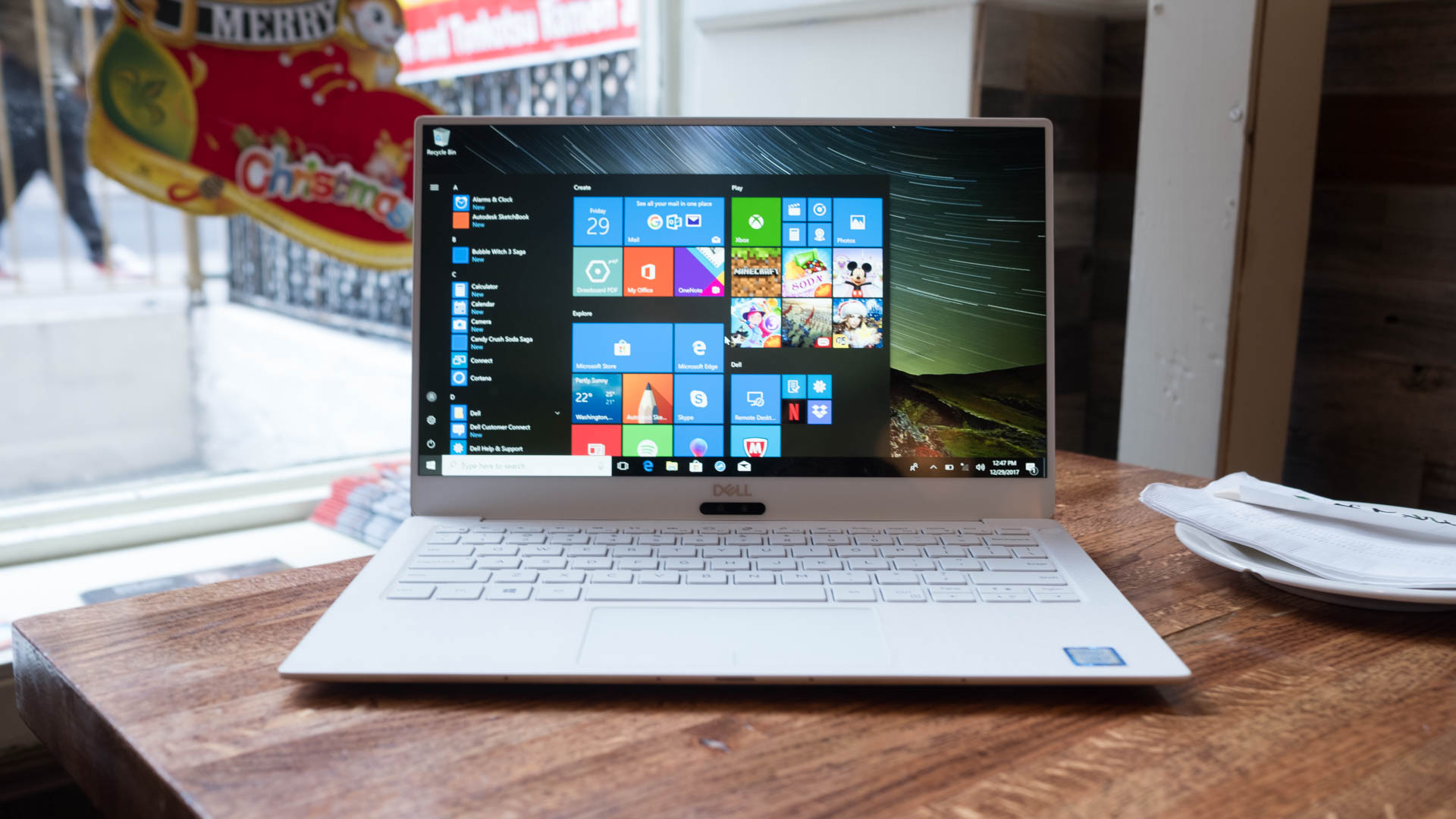TechRadar Verdict
Moving the webcam position, adding facial login and a four-mic array, giving Intel’s chips more headroom to perform even better and adding a 4K screen have all evolved the XPS into an even more formidable flagship laptop. In directly addressing the concerns of users, the Dell XPS 13 laptop is refined further than ever before.
Pros
- +
Centered IR webcam
- +
Gorgeous new design
- +
Beautiful optional 4K display
- +
Impressive performance
Cons
- -
Steeper starting price
- -
White option is pricier
- -
Still gotta’ move that webcam
Why you can trust TechRadar
What follows is our review of the Dell XPS 13 of 2018. Click the following link for our review of the latest Dell XPS 13 for 2019.
Dell has once again refined and improved its high-end laptop, with this year's Dell XPS 13 packing updated hardware in the thin and light design we've come to know and love. However, this time we also get a new color: Alpine White.
The Dell XPS 13 2018 comes with an 8th-generation Intel Kaby Lake Refresh processor, which boosts the performance quite a bit, compared to previous generations, and it also features three USB-C ports, Windows 10 and a microSD slot – which a lot of thin and light laptops are abandoning nowadays, to the chagrin of media folks.
Not only is the Dell XPS 13 deceptively powerful, considering its diminutive size, it's also extremely lightweight – coming in at just 2.67 pounds. This means, not only is it cheaper than the MacBook Pro (one of its chief competitors), but it’s also easier to carry around.
The Dell XPS 13 isn’t just one of the best designed laptops of the year, but it also takes some inspiration from recent smartphone releases, like the iPhone XS Max, where bezel-less displays are all the rage. The Dell XPS 13’s Infinity Edge display has bezels so thin, they practically vanish into thin air.
The Dell XPS 13 has improved in key areas, while leaving its best features untouched, which means it’s one of our picks for the best laptop in 2018.
We’re extremely impressed by Dell’s new XPS 13, thanks in part to its new Alpine White finish. In fact, we’re so impressed by Dell’s new XPS 13 design that it’s earned TechRadar’s Best in Class award for laptops once more – and it’s still the best 13-inch laptop on the market right now. Although it comes with the biggest design revision in years, it's also more expensive than ever.
Sign up for breaking news, reviews, opinion, top tech deals, and more.

Here is the Dell XPS 13 configuration sent to TechRadar for review:
CPU: 1.8GHz Intel Core i7-8550U (quad-core, 8MB cache, up to 4.0GHz)
Graphics: Intel UHD Graphics 620
RAM: 16GB DDR3 (2,133MHz)
Screen: 13.3-inch, Ultra HD (3,840 x 2,160) UltraSharp InfinityEdge touch display
Storage: 1TB PCIe SSD
Ports: 2 x Thunderbolt 3 (USB-C), 1 x USB-C 3.1, micro SD card reader, headset jack
Connectivity: Killer 1435 802.11ac Wi-Fi, Bluetooth 4.1
Camera: Widescreen HD (720p) webcam with 4 array digital microphones
Weight: 2.67 pounds (1.21kg)
Size: 11.9 x 7.8 x 0.3-0.46 inches (3.02 x 1.99 x 0.78-1.16cm; W x D x H)
Price and availability
It’s a little more expensive than it’s been in the past, but the Dell XPS 13 makes up for the higher price tag by noticeably boosting the performance and design.
Thankfully, this time even the least expensive edition comes rocking a quad-core processor, namely a 1.6GHz (up to 3.4GHz with Turbo Boost) Intel Core i5-8250U. It’ll set you back $999 (£1,269, about AU$2,190), but you’ll also be in for a 1080p non-touch display, 4GB of RAM and 128GB of SSD storage.
Similar to most flagship laptops in 2018, you can choose to beef up your configuration, complete with the specs that you need for your daily workload. If you need a faster processor, there are two models featuring a 1.8GHz Intel Core i7-8550U (4GHz with Turbo Boost) to pick from.
In total, the Dell XPS 13 we reviewed here would set you back $2,349 (£1,899, about AU$3,004), which is a lofty sum to pay for the average user. It does, however, come with a 4K display, 1TB of storage space and 16GB of RAM. While we enjoyed the display on its own, other accounts have stated that it looks worse than the base model’s 1080p screen because of its lower color accuracy and contrast.
Keep in mind, too, that the Rose Gold on Alpine White version of the Dell XPS 13 is a bit pricier than the standard, silver-on-black model in the US, by adding an extra $50 regardless of the hardware inside. Worse yet, this version is only available in the US.
All configurations for the new Dell XPS 13 include three USB-C ports (two of which are Thunderbolt 3), a microSD card reader and a 3.5mm audio jack.
If you’re keeping track, the only flagship laptop mentioned here that can match the Dell XPS 13 in price, is the Google Pixelbook. Both the 13.5-inch Surface Book 2 and the MacBook Pro are more expensive to start for similar or inferior hardware configurations.
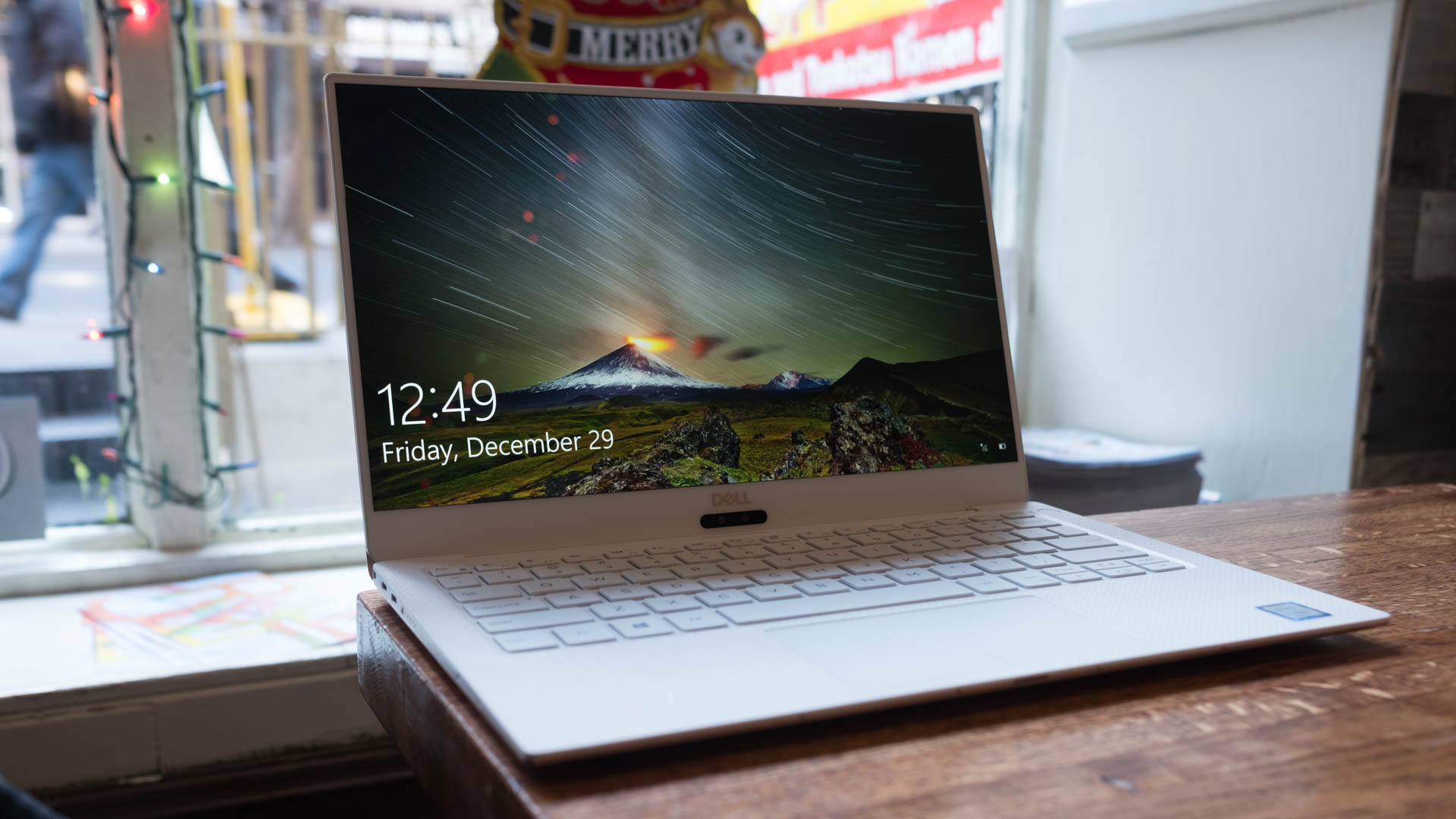
Design
This is the first time that Dell has noticeably changed the Dell XPS 13 since it earned the top spot in our rankings. For starters, it’s surprisingly thinner and lighter than the 2017 model that came out just a few months before the Dell XPS 2018.
Dell slimmed down the XPS 13 chassis to be 30% thinner at just 0.3 inches (3.4mm) at its narrowest point and a touch lighter at merely 2.67 pounds (1.21kg).
Now, the second most notable of changes to the XPS 13 design is bound to be the brand new Rose Gold on Alpine White color option. While pretty much every laptop manufacturer has a rose gold color option in 2018, Dell takes it to another level with an all-new set of materials for the complementary-colored keyboard deck on the XPS 13.
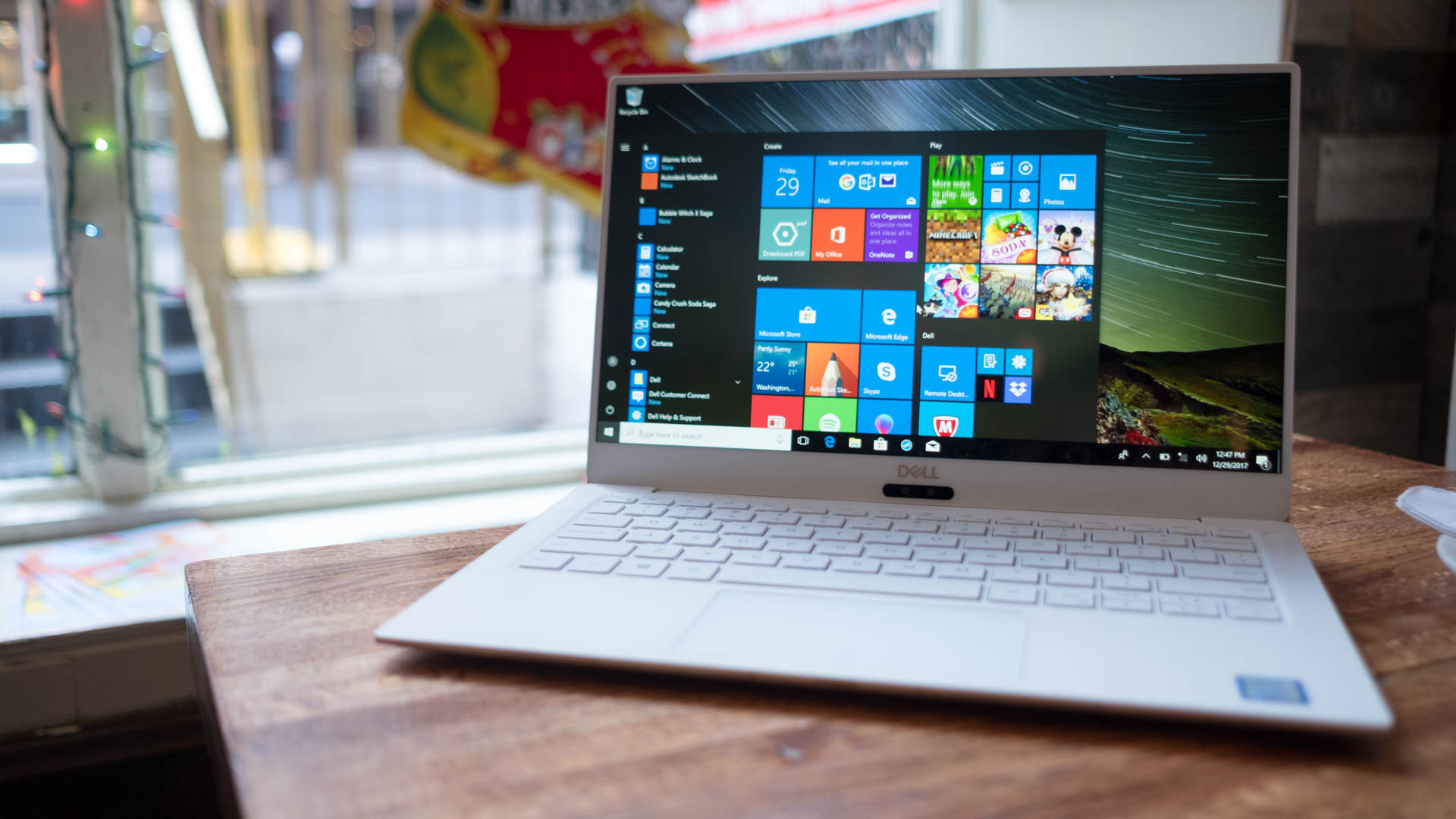






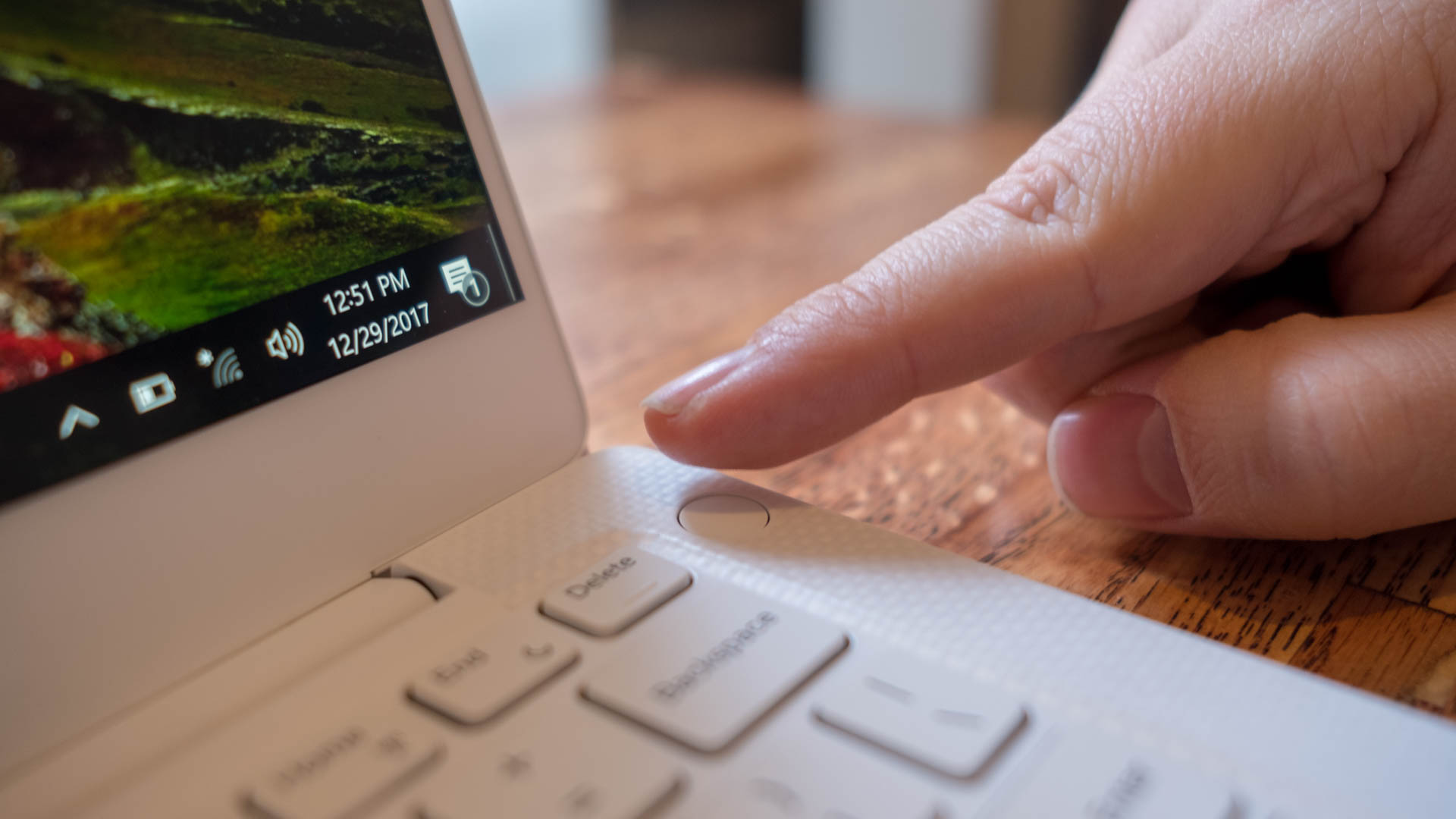
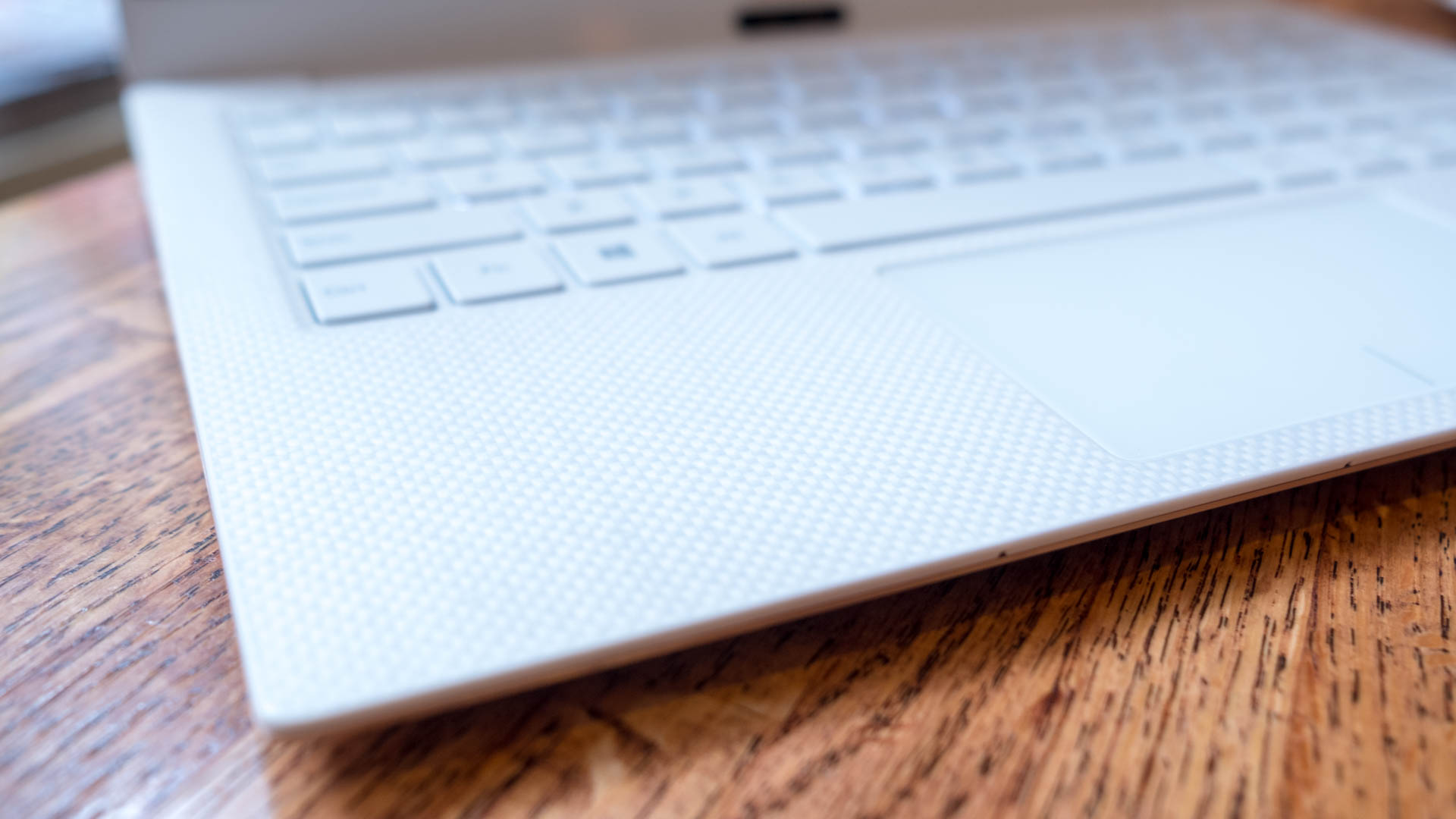

This is the first time woven glass fiber has been, well, woven into a laptop. Plus, the base has a titanium oxide coating which gives it a pearlescent sheen, not to mention stronger stain-resistance than most.
Dell is particularly proud that the new keyboard deck houses a crystalline silica material that has the white color literally woven into it like a fabric, in nine composite layers.
Sadly, the plastic that borders the laptop’s display isn’t quite as stain resistant as the rest of the Dell XPS 13. While we tested this laptop over the course of a few weeks, the softer plastic got a bit gray compared to the rest of the plastic that borders the edge of the base.
Still, the new Dell XPS 13 marks a turning point on our biggest bugbear – the webcam. The new IR lens works great for speedy logins via Windows Hello – the system that scans your face to sign you in. However, the red flashing of the infrared lights is a bit much.

That said, the 720p webcam produces about as sharp of visual as that of the latest MacBook Pro, but isn’t a 60 frames-per-second lens like that on the Pixelbook. The Surface Book 2 beats them all with a 1080p camera.
The webcam comes equipped with four microphones – placed within the lip of the base of the laptop – for stronger video chatting input as well as far-field communication for yelling at Cortana from across the room. These mics pick up clearer voice audio over video chats than some of its competitors.
However, they won’t be challenging the likes of Google Home and Amazon Echo anytime soon. While the microphones can pick up our ‘Hey, Cortana’ commands from a few feet away in front of the laptop, trying them from behind the laptop at the same distance is a bust.

Display
Another major improvement upon this year’s design is the display. The screen is now available with an optional 4K Ultra HD (3,840 x 2,160) resolution beneath a glossy, IGZO touchscreen. That’s sharper than any of the previously mentioned, competing laptops.
Because the Dell XPS 15 rocks a 1,500:1 contrast ratio and 100% sRGB color coverage, blacks look as if the backlight shut off in those spots during darker scenes in videos and photos and colors pop with vibrancy. At the same time, the touch display is responsive and fluid, and had no problem recognizing all the gestures.
Plus, the Dell XPS 13’s display is coated in a 0.65% anti-reflective coating that aims to offset screen glare – the downfall of all touchscreens.
Now, we didn’t really notice a difference while using the laptop for the last few weeks, but the brightness scaling of the Dell XPS 13 is great enough to call out. Putting the screen as low as 10% brightness doesn’t affect our ability to read and write on the Dell XPS 13.
First reviewed January 2018
Bill Thomas and Gabe Carey have also contributed to this review
- 1
- 2
Current page: Introduction, price, design and display
Next Page Performance, battery life, keyboard and trackpad, and verdict
Joe Osborne is the Senior Technology Editor at Insider Inc. His role is to leads the technology coverage team for the Business Insider Shopping team, facilitating expert reviews, comprehensive buying guides, snap deals news and more. Previously, Joe was TechRadar's US computing editor, leading reviews of everything from gaming PCs to internal components and accessories. In his spare time, Joe is a renowned Dungeons and Dragons dungeon master – and arguably the nicest man in tech.
